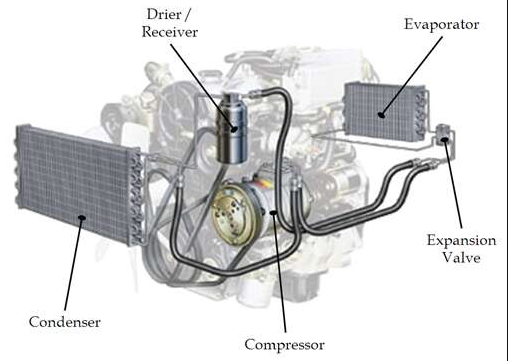Mandi: Indian Institute of Technology Mandi researchers of Modelling and Intelligent Control group have developed new algorithms for component failure detection and diagnosis that can enhance the energy-efficient operation of Heating, Ventilation and Air Conditioning (HVAC) systems used in buildings.
The results of the team’s recent work have been published in the Journal of Building Engineering, Elsevier. The research paper has been done under the direction of Dr. Tushar Jain, Assistant Professor, School of Computing and Electrical Engineering, IIT Mandi, and co-authored by his research scholar, Mr. Mona Subramaniam A., and Dr. Joseph Yamé from Universitè de Lorraine, France.
In centralised HVAC systems in buildings, climate control and ventilation are performed at a centralized location outside the building by an Air Handling Unit (AHU) which results in better maintenance and no indoor noise. The processed air is distributed to every room with the help of controlled ducts and excess air in the room is recirculated through the unit.
The effective operation of centralized HVAC systems requires the careful orchestration of the various components. A faulty component may hamper the efficient operation of HVAC and increase costs of operation. Furthermore, a faulty component increases the load on the other healthy components, thereby increasing wear and tear and reducing the life of the entire system.
Commercially available building energy management systems cannot accurately pinpoint the location and magnitude of fault that has occurred in the HVAC. Automatic diagnosis of faults can provide a heads-up on possible failure and this information can be used to proactively repair the system and thus reduce the turnaround time and costs of HVAC fault maintenance.
“Variable-air-volume (VAV) terminal boxes are an important component of centralized HVAC systems. Any faults or failures in these VAV boxes can drastically affect the control performance. The VAV dampers play a significant role in the supervisory health-aware control strategy of the system, and timely and automatic detection of faults in these components can be very useful in the management of the health of the HVAC”, explains Dr. Jain.
The algorithm developed for detection and estimation of the magnitude of the failure of VAV dampers uses analytical models that are applicable over a wide range of unpredictable operating conditions, such as weather dynamics, outside air temperature, zone occupancy profile, and so on. “The wall temperature, which is usually ignored in climate control, is an important parameter for efficient function of the HVAC, and our algorithm takes this into consideration”, he further added.
The team has demonstrated the effectiveness through exhaustive simulation studies and have shown that the developed algorithm can successfully detect and estimate the magnitude of VAV multiple damper faults.
This research work has been funded by the Ministry of Electronics and Information Technology under the Visvesvaraya PhD Scheme, and the Science and Engineering Research Board of the Government of India, and partially supported by the 7th Framework Program of the European Union.
The team is working towards developing decentralized and distributed fault diagnosis algorithms and fault-tolerant control strategies for large scale buildings in order to ensure more energy-efficient operation of HVAC systems and hopes to extend this work to real time testing and validation on a real building monitoring platform.
A senior journalist who has spent more than a decade in the profession, working for Amar Ujala and Aapka Faisla.




